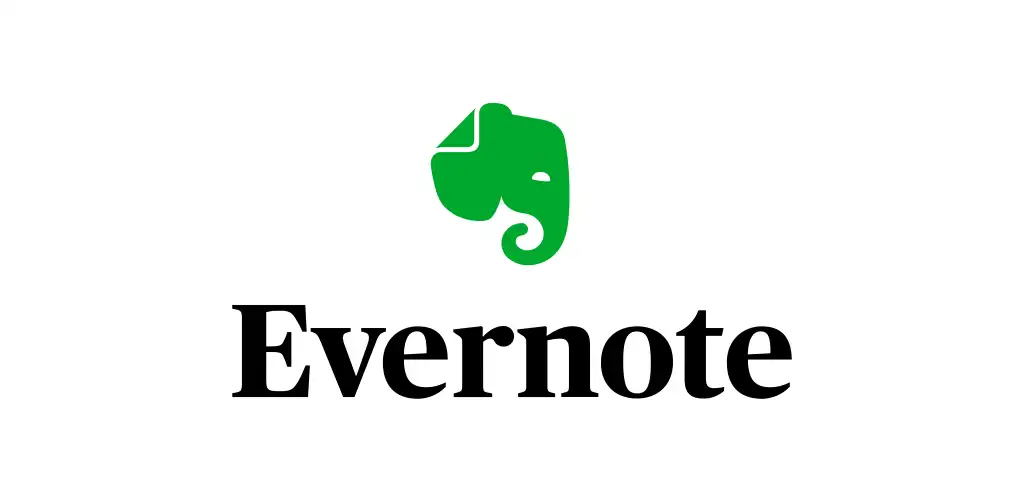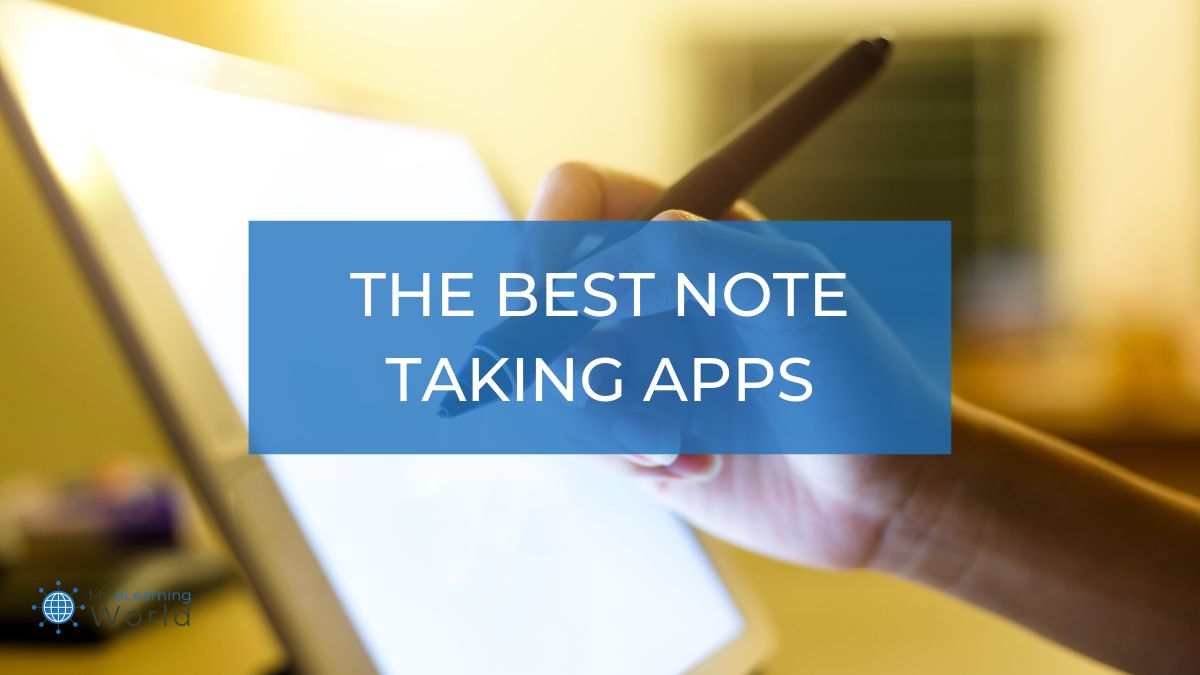With the best note taking apps, you can more easily jot down important information, capture your thoughts, and keep your ideas organized whether you’re at school, work, or just out and about. In fact, studies have shown that those who take notes have better recall and perform better when tested on the material discussed.
No matter your note-taking style, there’s an app out there that’s perfect for you. Below, I’ve compiled a list of what I believe are the best note taking apps currently available. I’ve taken into account a variety of features including ease of use, note organization options, device availability, export options, and cost (click here to learn about our entire Editorial Process & Methodology for product reviews).
What are the Best Note Taking Apps in 2023?
1. Evernote
 Evernote
Evernote
Evernote helps you make your notes more useful, more accessible, and better organized with their easy-to-use app that's great for students, professionals, and just about everybody.
You can’t have a list of the best note taking apps without starting it off with Evernote. It’s one of the most popular note taking apps available, and I use it pretty much every day.
Evernote makes it easy to jot down ideas, organize them, and even collaborate with others on projects. It offers a variety of features that make it perfect for students, professionals, and anyone in between.
You can easily take notes, attach files, add images, set reminders, present notes in a slideshow style, and even record audio. I also like that you can create tasks and to-dos inside your notes with due dates and reminders to help make sure nothing gets forgotten.
One cool feature I really like is the Web Clipper extension that lets you save a full webpage with one click.
Plus, with Evernote’s cross-platform availability, you can access your notes on just about all your devices, including iOS, Android, Windows, Mac, and on the web.
Evernote pricing also includes a variety of subscription options depending on how you plan to use the app.
The free plan is great for most regular users, but they have a Professional plan with some cool features, including integrations with Google Calendar, the ability to create task lists and reminders, and more.
All in all, Evernote is the easiest to use and most feature-rich when compared to other note taking apps.
Click here to try Evernote for free.
2. Microsoft OneNote
Microsoft OneNote is a great note taking app for those who want an all-in-one solution.
With OneNote, you can easily create notes, add images, collaborate with others, and so much more.
OneNote also offers a variety of features that make it perfect for students.
You can easily type, write, or draw notes to fit your note taking style.
For students, OneNote is like a digital binder that can encompass all their academic needs. It allows for free-form note-taking, letting you type, write, or draw just as you would on paper, working with all different learning and note-taking styles. The ability to search notes and clip information from the web makes researching and organizing a subject pretty easy.
But OneNote isn’t just for students. Educators, professionals, and people in all walks of life find the app useful.
Plus, with OneNote’s cross-platform availability, you can access your notes on just about any device including iOS, Android, Windows, Mac, and on the web. The only negative I’ve found with the app is that was a bit buggy and slow when using it on an Android device.
3. Google Keep
Google Keep is a cloud-based service that allows users to create and store notes, lists, and voice memos.
The app is available on both Android and iOS devices, as well as on the web.
Keep syncs across all of your devices, so you can access your notes from anywhere.
While Keep is a solid enough notes app, what really makes it useful is the way it integrates with other Google services, like Google Docs, Google Calendar, Gmail, and more. This is a huge plus for those in the Google ecosystem.
The only real complaint I have about Google Keep is that while it’s excellent for quick note-taking and to-do lists, the hierarchical organization features seem a bit lacking from my experience when doing more complex note management.
You can get 15GB of storage across all Google apps for free or pay an additional fee for more storage.
4. Apple Notes
Apple Notes is a built-in app that allows users to create quick notes on their devices.
Unlike some note-taking apps, Apple Notes is designed to be simple and easy to use, with a minimal interface that makes it easy to jot down thoughts.
Notes can be created from anywhere within the app, and users can also add images, tags, and web links. It also integrates with Siri, so you can create notes hands-free.
In addition, Apple Notes can be synced across all of a user’s devices, making it easy to access notes from anywhere.
Whether used for school, work, or personal use, Apple Notes is a powerful tool for anyone who wants to stay organized and productive.
This free note taking app is pretty barebones in terms of features, but it’s a decent option for those on Apple devices.
5. Simplenote
Simplenote is a free, cross-platform note taking app with a focus on simplicity and ease of use.
Available for iOS, Android, Mac, Windows, and Linux, Simplenote makes it easy to capture ideas, organize notes and tasks, and keep track of everything from grocery lists to project deadlines.
With its clean design and intuitive interface, Simplenote is an ideal choice for anyone looking for a straightforward note taking app.
One cool feature I like is that you can go back in time and see previous versions of your notes, in case you need to revert back to an older version.
Among the totally free note taking apps, Simplenote is certainly one of the top choices.
6. Bear
Bear is a beautiful, minimalist note taking app for iPhone, iPad, and Mac.
With Bear, you can easily create and format notes, edit them, and share them.
Plus, Bear has some great security features for protecting sensitive information.
You can encrypt notes, password protect individual notes, and even set your notes to open using Face/Touch ID.
There is a free version, but if you want to enjoy all of the advanced features this app, you’ll need to pay for a Pro plan at $2.99 a month or $29.99 a year. It’s worth mentioning that it used to cost half this much a year or so back, so you may want to take the price increases into consideration.
7. Dropbox Paper
Dropbox Paper is a versatile online tool that allows users to create and collaborate on documents in real time.
With Paper, users can easily add images, videos, and files from other Dropbox users into their documents, make comments and annotations, and integrate with apps like Slack and Google Calendar, making it an ideal platform for team collaboration.
And with its clean and simple interface, Dropbox Paper is easy to use for both individual and group projects.
What to Look for When Choosing a Note Taking App
While there are lots of great note taking apps out there, the one that’s best for you will depend on a few factors.
Here are some things to keep in mind when you’re looking for the best app for taking notes for your specific needs…
- Ease of Use–You want an app that’s easy to use and won’t take up too much of your time. The last thing you want is to spend more time trying to figure out how to use the app than actually taking notes.
- Note Organization Options–How you organize your notes is important. Some people prefer having all their notes in one place while others like to have different notebooks for different subjects. The best note taking tools offer organization options that will work best for you.
- Device Availability–You’ll want to make sure the app you choose is available on all the devices you use. If you only take notes on your laptop, then this won’t be as big of a deal. But if you like to jot down ideas on your phone or tablet, too, then you’ll want an app that’s available across all platforms.
- Export Options–You never know when you might need to export your notes. Maybe you’ll want to print them out or share them with someone. Look for an app that offers a variety of export options so you can always get your notes out when you need to.
- Cost–Finally, you’ll want to consider the cost of the app. Some are free while others have monthly or yearly subscription fees. Think about how you plan to use the app and what features you need, and choose one that fits within your budget.
Final Thoughts
The right note taking app can make a big difference in how productive you are.
By choosing an app that’s easy to use and has the features you need, you can save yourself time and hassle.
So, what is the best note taking app? It really depends on your specific needs. But I personally think Evernote is a great option for most people. It’s packed with features, it’s available on just about every platform, and it’s easy to use.
Do you have a favorite note taking app? Let us know in the comments below!


